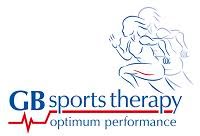Last week I spent a day in a human dissection lab. It’s not the normal place to spend a windy Wednesday, but nonetheless I’d been looking forward to it in the same kind of way as people look forward to going to Alton Towers for about 8 months. In fact it was visiting Gunther von Hagen’s Bodyworlds Exhibition three years ago that made me decide I wanted to change careers. The presentation of plastinated bodies in their sporting poses got me hooked on functional anatomy – what an incredible assembly of pullies and levers, electrical circuits, pumps and mechanics we are!
 |
| Bodyworlds Exhibit "Running Man" |
But despite my enthusiasm as we climbed the stairs to the dissection lab at King’s College London my nerves began to kick in – what if I were to have an involuntary reaction that people speak about, and pass out on the floor? What would the smell be like, and would I actually be able to bring myself to palpate the specimens? We reached the double doors at the top of the stairs and I was ready to walk through and pick up my white coat and gloves and receive our briefing but BANG we were straight in – oh my goodness. Within a few seconds I realised that this was the best way to do it though, there was no putrefaction smell and I breathed a sigh of relief. We skirted around thirty gurneys - some closed and some open revealing various specimens, to our briefing area which was surrounded by pots full of further dissected specimens. Wow!
We were given the format for the day, a little workbook, a white coat and gloves and invited to wander around and acclimatise ourselves to the environment. And so it began… I approached the first table really nervously and was presented with two legs dissected at the hip, with skin and fat removed to reveal the impressive musculature of the quads, hamstrings, gastrocs and soleus. And now I can immediately understand how knee problems are created by muscle imbalances in the leg, and how a tight ITB can alter gait and hinder progression. It’s one thing looking at 2d images and computer simulations but to see the muscles spiralling around a leg and inserting into the knee really helps you to understand how we move, and how injuries arise.
 |
| Bodyworlds Exhibit "Basketball Player" |
We spent an hour or so picking up and palpating the specimens, seeing how muscles contract and lengthen in movement, checking out real origins and insertions, comparing the differences between specimens and pretty soon most of us were completely absorbed in what we were doing and all our nerves had disappeared. I was blown away by the thickness of the sciatic nerve, and how it passes through/around piriformis in the buttocks which in itself was so surprisingly small. Such a little muscle can cause so many problems! And further amazed by the depth and thickness of psoas – no wonder it’s a nightmare to stretch and contributes to back pain and disfunction.
After a little while we were invited to open the closed gurneys which contained entire donors. Their faces were covered and all we knew about them was their age, sex and cause of death. It wasn’t the first time that I’d seen a corpse but for some people it was and we were mindful of our colleagues’ reaction as some chose to stand back or sit down. Everyone was composed, dignified and completely respectful - carefully removing the plastic and choosing to keep the donor’s face covered. Gently palpating and exploring the bodies I was struck by (and I know this sounds ridiculous), quite how lifeless and inanimate they were. It didn’t upset me – their life had left, and what remained was a vehicle that served them all brilliantly until an excellent age of 80 plus. This body, this complex assembly of sciences had escorted them through amazing lives and now these very generous people and their families were allowing students to learn from its successes and ultimate failure. What very kind people these were, and how privileged were we.
Phewee… What an amazing experience, and as somebody who struggles with books I learned more functional anatomy in that day than in two years of referring to my anatomy books. A big thank you to the staff at King’s College London, the London Massage Company and of course to everybody who carries a donor card. If you have any questions please email me at georgie@gbsportstherapy.co.uk.











.JPG)



























